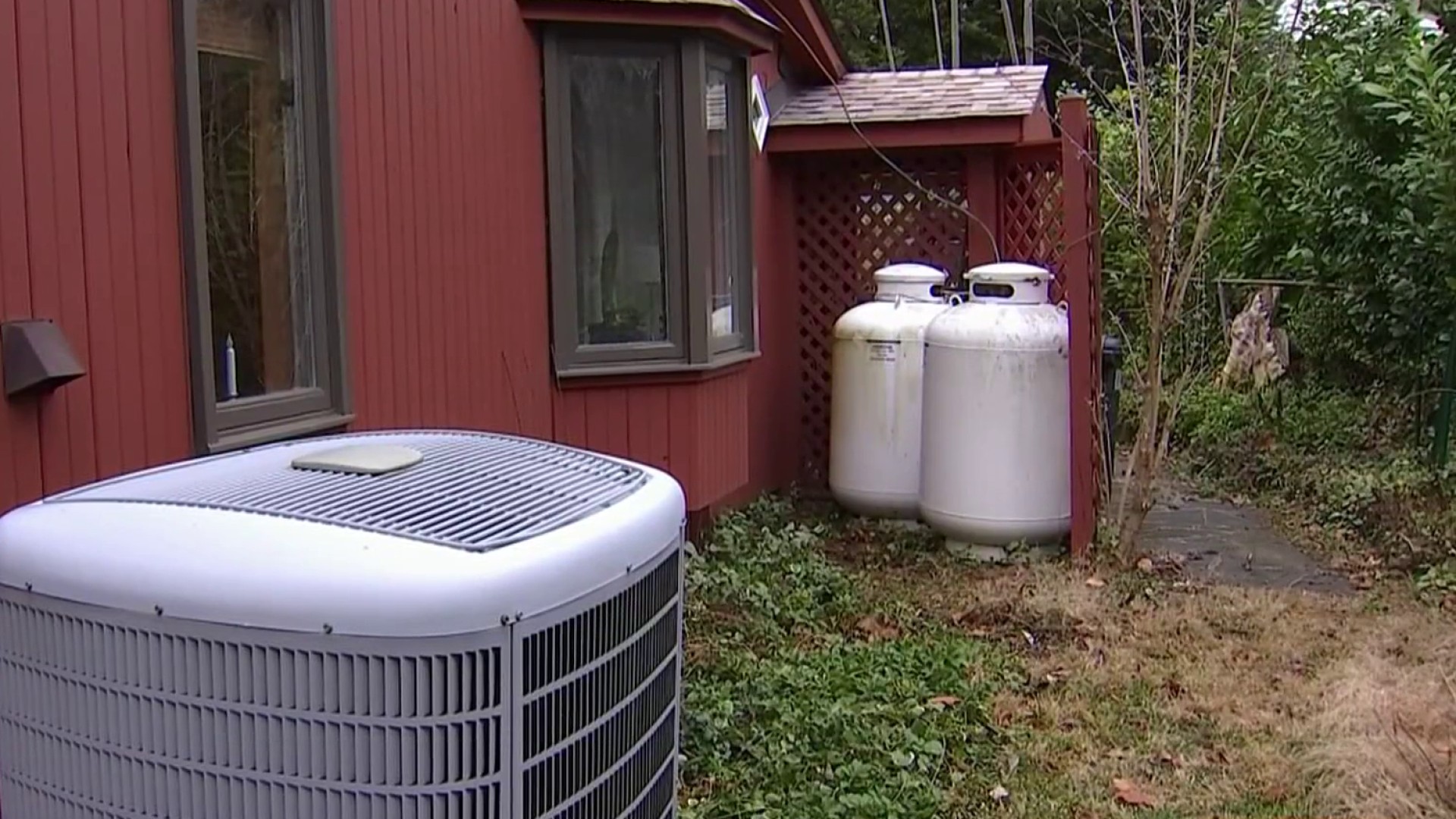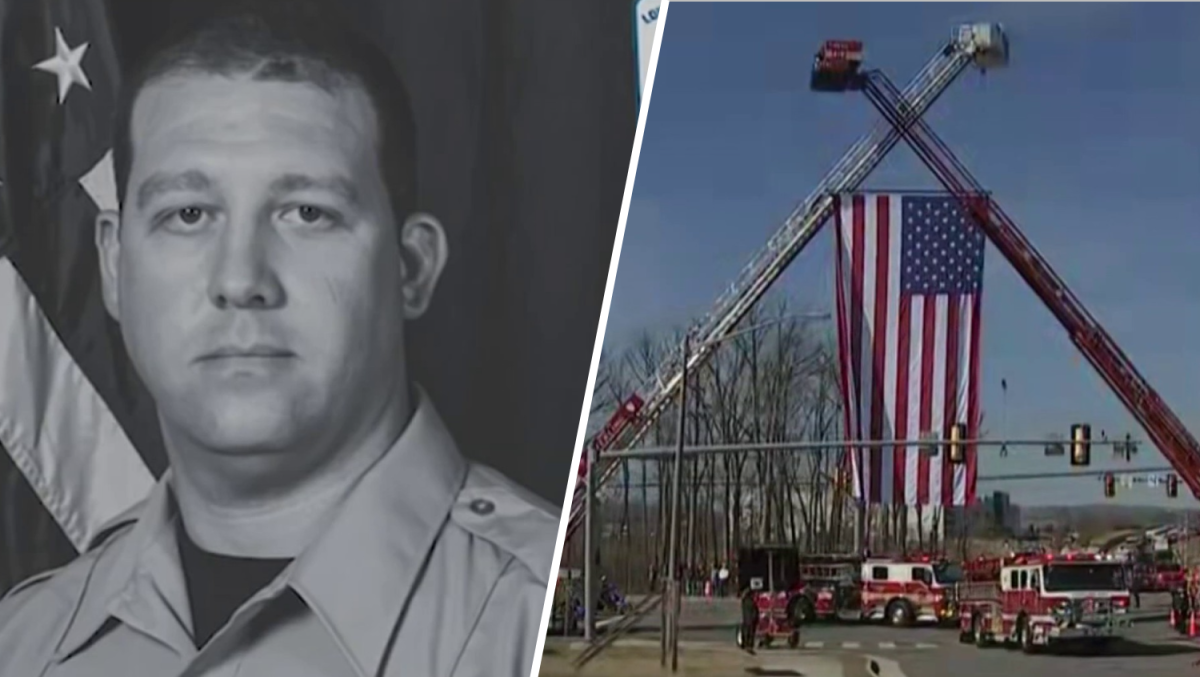A month after a firefighter died and others were severely injured in a gas explosion at a Sterling, Virginia, home, Loudoun County’s fire chief says his crews were saving lives and should not have done anything differently.
“Not at this time,” Loudoun County Fire & Rescue Chief Keith Johnson told the I-Team as he looked back on the response from Feb. 16. At the time of the explosion, firefighters were responding to a gas leak call. Radio calls indicate crews found a leaking 500-gallon underground propane tank in the backyard.
It is believed that gas seeped from the leaking tank into the home before it exploded with firefighters inside.
“Most people will ask, you know, why were you in the house?” Johnson said. “The answer is simply, well, we have occupants to remove in the house. They were inside. Our first job is life safety. We will risk a lot to save a lot."
We're making it easier for you to find stories that matter with our new newsletter — The 4Front. Sign up here and get news that is important for you to your inbox.
The I-Team learned it is far from the only underground tank in the county. Loudoun County does not maintain records on the number of underground storage tanks in the county, but building records show at least 2,000 permitted tanks countywide.
The fire department pointed out that as development spreads across the county, not all neighborhoods are served with underground gas lines.
In Prince William County, Virginia, approximately 5,030 residential gas storage tanks are currently permitted.
In Maryland the Department of Permitting, Inspections and Enforcement in Prince George’s County has permitted approximately 700 above ground and underground gas storage tanks since 1982 and about 230 propane storage tanks. In Montgomery County, there are more than 2,300 permits for storage tanks.
As with many fire departments, Loudoun County firefighters carry a gas meter equipped to measure pentane, which they described to the I-Team as an effective way to detect either propane (normally stored in tanks) or methane (piped natural gas).
As the I-Team examined how departments across the area respond to gas leaks, that handheld meter emerged as one of the most important tools they carry.
“Our meters obviously are calibrated to read gas, and we have action levels,” Johnson said. “When it gets to a certain actionable action level, we will remove ourselves from the environment. We can't operate in an environment that's not safe.”
“(It is) still yet to be determined what the crew saw when they got there, what they had on their meters,” Johnson said. “That's all in the review.”
Johnson hopes his department’s internal reviews will be complete by the end of the year.
The National Institute for Occupational Safety and Health — a national workplace safety agency — is investigating as well. NIOSH investigates all firefighter line-of-duty deaths to find causes, but also to determine better techniques.
NIOSH’s current best practices for gas leaks insists every firefighter should know how to use that gas detecting meter; crews should maintain cold, warm and hot zones to know where it is safe; and a "defensive approach" should be used "until all gases have been eliminated from any structure and surrounding area."
"It's hard to say that you should never go inside of a building with a natural gas leak,” said Jamie Burgess, the director of hazardous materials training for the International Association of Fire Fighters. “For the most part, firefighters are going to go inside, because we have to stop, we have to stop the source. We have to stop the leak, or at least identify the source of, of the leak.”
The D.C. Fire and Emergency Medical Services Department recently allowed the I-Team inside its training academy to see a gas leak scenario up close.
D.C. Fire Marshal Mitchell Kannry started by explaining why responding crews do not pull up to the front of the gas leak.
“We start at 200 feet away,” he said. “That's what our policy is. And then we slowly and kind of actually make our way closer."
It is a common policy among fire departments.
First crews will lay a water line in case a fire starts, and a team will approach with their gas meters.
In the scenario the I-Team witnessed, crews found an elevated gas level. It meant they had to turn on their air tanks and evacuate the building while trying to determine the source of the leak.
“We have a responsibility to search,” Kannry explained. “For the safety of all those citizens, we can't just leave and wish everybody good luck."
Once the building was secure, the training firefighters left the building as well and staged outside at safe distance – outside what they called a ‘collapse zone’ — hopefully far enough to avoid both a building collapse and flying debris.
The danger is very real.
"Essentially what these buildings are, when they're, when they're pumped full of natural gas, they're bombs,” the IAFF’s Burgess emphasized. “All they need is an ignition source."
D.C. firefighters used that safe distance near the site of a gas leak Jan. 18 in Southeast. That morning, a delivery truck hit the gas line next door to Baby Einstein Child Development Center on Marion Barry Avenue.
“We actually smelled gas (inside and on the second floor)," Baby Einstein owner Regina Snead said.
She jumped into action, getting 16 kids, some just months old, into their coats and out the door.
Minutes after they got to the corner, the windows exploded out of the day care’s building, and the convenience store next door collapsed.
“If we didn't think quickly, we could have been in the middle of all this," Snead said.
Not even one of the kids she cared for was hurt.
In the midst of it, the dozens of responding D.C. firefighters escaped injury, and not a single truck was damaged.
A month after the Sterling explosion, Battalion Chief Sam Myers said he can see some added concern from his fellow firefighters who respond to gas leaks these days. And as Johnson said, that night will stay with him and his entire team.
“It is the behavioral health aspects of what our folks experienced,” he said. “Both those that were injured and not injured is yet to be seen. There's a lot of emotional trauma besides the physical trauma, and I don't know that we're going to know the extent of that for quite some time.”
Reported by Ted Oberg, produced by Rick Yarborough, shot by Jeff Piper and Steve Jones, and edited by Jeff Piper.
Sign up for our Breaking newsletter to get the most urgent news stories in your inbox.




